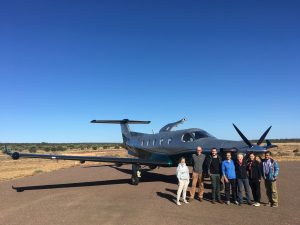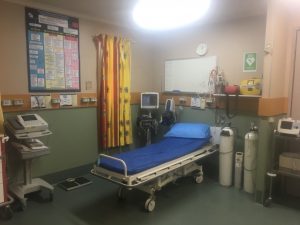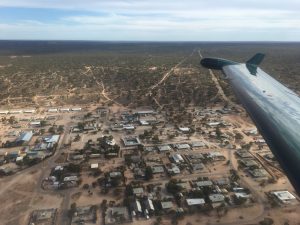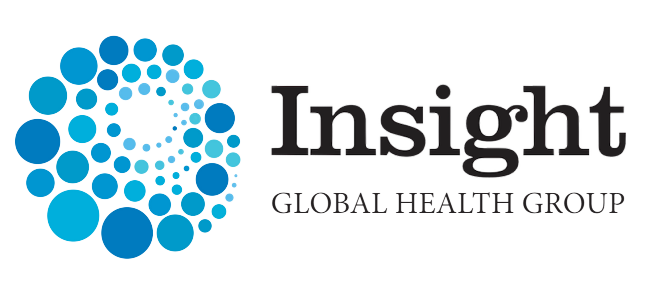
Over the years, Australia has moved towards Closing the Gap which exists between Indigenous and non-Indigenous healthcare. This change is a continual work-in-progress and is powered by the force of peoples‘ voices, organisations, rallies and calls for legal framework implementations. However, there is still a long way to go, as seen in medical students’ experiences in Indigenous communities. Below is one students‘ experience in Yalata.
I was lucky enough to join Dr Md Moniruzzaman and Dr Michael Nugent in February 2019 on the Kakarrara Wilurrara Health Alliance trip to the remote Aboriginal community of Yalata, 200km west of Ceduna on the Great Australian Bight. After boarding a tiny 8 seater propeller plane (the same used by the RFDS) and getting a stunning aerial view of the South Australian coastline, we landed on the red dirt runway of Yalata. We were greeted by a car of locals who had driven to the airport to watch the plane land (as one told me, they’d “never seen a green plane before”).
After watching the green plane take off, the car set off on the 22-hour drive to Tjuntjuntjara, a common commute for the fairly transient people of Yalata who often relocate between Ceduna, Oak Valley and Tjuntjuntjara with very little notice, posing a considerable difficulty to follow-up in the healthcare setting.
It soon became clear that there were many challenges to traditional Western healthcare in this community. A well-loved community elder had died the night before we arrived, and the community was observing ‘Sorry Business’. Because of this, we were informed that the clinic would have to be closed today out of respect. Given Yalata only had doctors onsite for 5 days of the month, this did not mean that we had the day off. Instead, while the doors to the clinic were closed and lights off in a mark of respect, any patients wanting to see the doctors were discretely welcomed through the back door.

Even on a normal day in Yalata, the clinic does not work like normal.
There are no appointments and follow-up is incredibly difficult.
At lunch time one of the doctors reviewed the patients needing recalls with the practice nurse (mostly children needing vaccinations or penicillin injections post-rheumatic fever and adults needing contact tracing or test-for-cures after the recent gonorrhoea outbreak).
These recalls did not get a phone call, but instead I hopped in the passenger seat of Sam the nurse’s 4WD and we cruised down the dusty streets of Yalata trawling for patients needing treatment.
If Sam spotted someone needing a review she would roll down the windows and encourage them to hop in the car and come to the clinic, with varying levels of success.
That evening I explored the town of Yalata.
I noted that the local shop had taken it upon themselves to mark-up the prices of sugary food and drink (diabetes in rampant in the community), though fresh fruit and vegetables were also depressingly unaffordable thanks to the difficulty of getting them to such a remote area.
The locals mostly survived on non-perishable food fairly devoid of nutrition like instant noodles or instant soup, and the children were almost universally low in iron along with other nutritional deficiencies rarely seen in high-income countries like Australia. The day I arrived in Yalata, Closing the Gap released a report which revealed that once again Australia had not been meeting the goals set out for Australian Indigenous health outcomes.
The next day I was called in at 7am because a man had come into the clinic complaining of sudden-onset epigastric pain. In the spartan Emergency Room Dr Moni, Sam and I took a targeted history from the patient, Sam asked if he had eaten any wombat, apparently a common meal in Yalata and a frequent precipitant of biliary colic thanks to its high fat content.
Our ability to work up this patient was limited as the only investigations we had to our disposal were an ECG and a stat VBG and troponin machine.
An assumptive diagnosis of acute pancreatitis was made based on his history and arrangements were made to transfer the patient to Ceduna for supportive care and monitoring. Liaising with RFDS, it was decided that we would drive the patient halfway to Ceduna in the fairly old-school Ambulance owned by the clinic, and we’d be met halfway by SAAS (at an empty truck-stop) who would take over the patient’s care. As we drove for an hour through the barren scrubland I was struck by how remote this community is.
I would encourage any student who is lucky enough to get the opportunity to visit Yalata or any other Indigenous communities to embrace it enthusiastically.
As doctors trained in Australia I think we have a duty to understand the unique challenges which face our Indigenous people and an understanding about how to communicate and practice in a culturally sensitive way. The doctors, nurses and health workers were all excellent and eager to teach. I suspect each trip to Yalata would vary wildly in terms of what you see, but will always be an eye-opening experience!
– Roger Parnis

